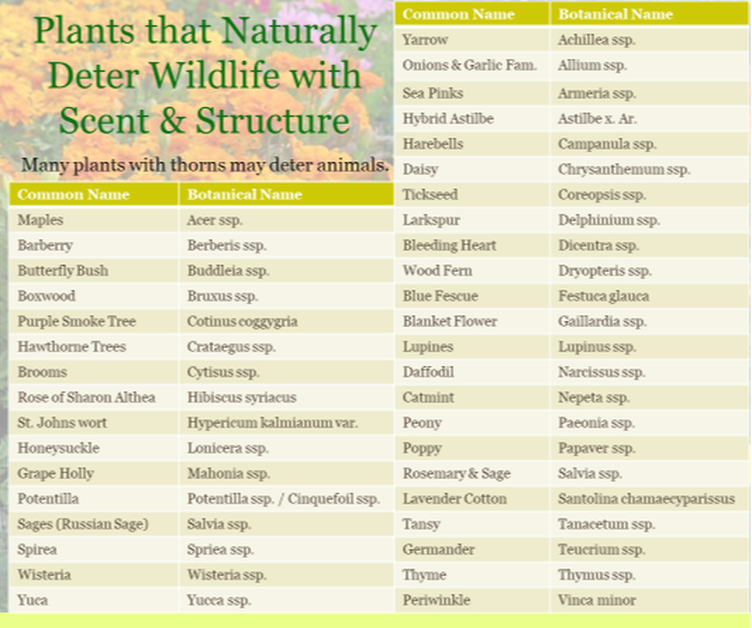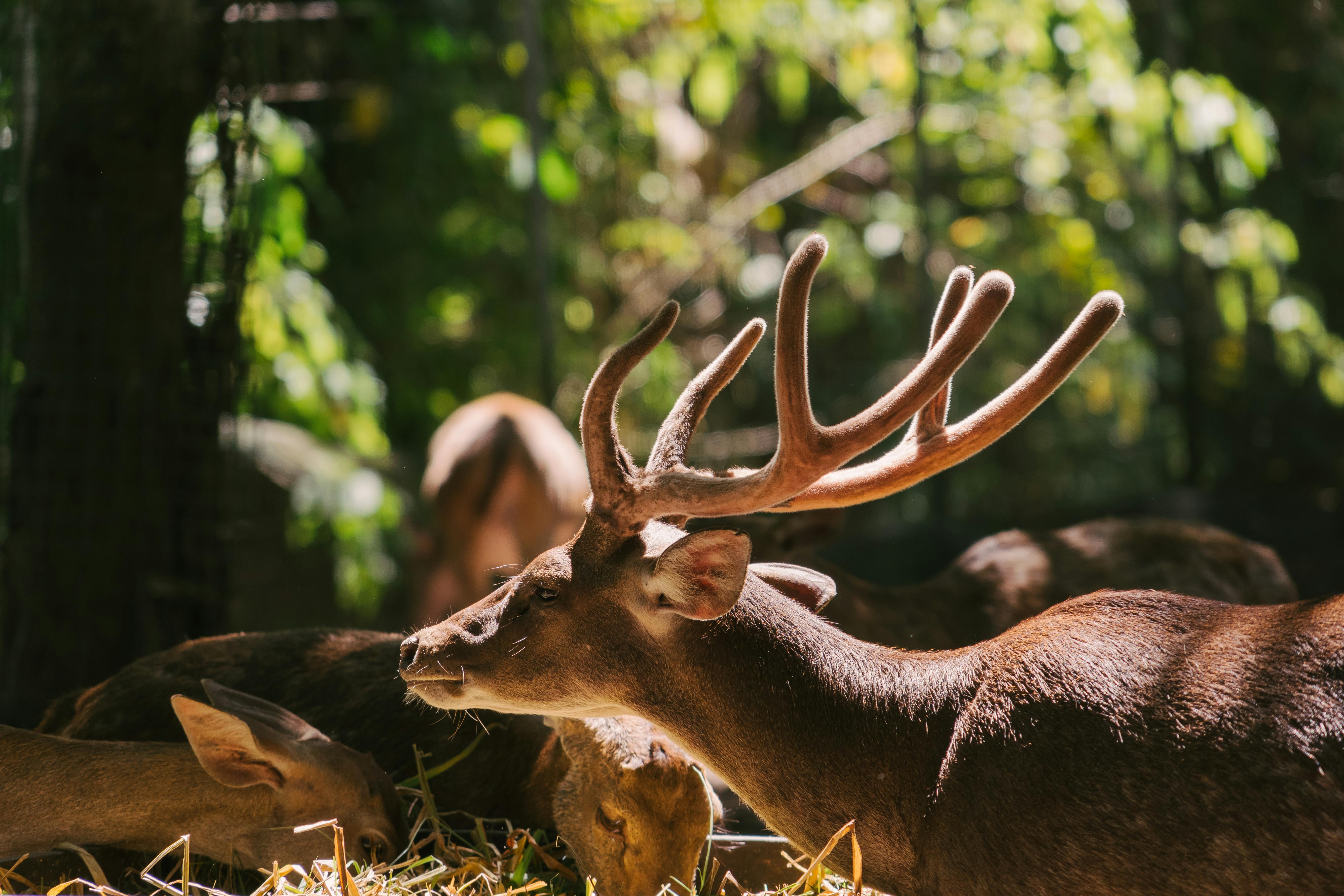Deer & Rabbit Resistant Plants
Wildlife like Deer and Rabbits often browse garden foliage. These plants tolerate moderate browsing.
Plants labeled as Wildlife “Resistant” are more so Resilient to permanent damage caused by browsing animals.

Wildlife Resistance
We hope the rainy impact on the high country attracts the local fauna away from our flora. In dry, hot years hungry critters may look to our landscapes for a refreshing snack.
Is there anything they WON'T eat?
Truthfully, not really. If they cannot find sustenance in the wild, they will head into town to dine even on "Deer Resistant" plants. Certain plants are attractive to critters with a deprived palate, but many native plants have tendencies that help them survive consistent browsing or emit natural deterrents that protect them. For example, Sages, Lavenders, Catmint, and Yarrow have silvery leaves that emit a strong scent. These scents may be attractive to us but are usually not very tasty and are often avoided. Even Columbine and Daisies emit a strong enough smell that deer are uninterested in pursuing the meal.
What about the flowers and vegetable garden?
Birds, squirrels, and bears are consistent competition for our edible fruits and vegetables. Many fruiting bearing plants, like Tomatoes, or plants that bloom once may not recover when browsed as they lack the energy to start over again or are no longer in season to do so. There are many plants out there with edible and medicinal effects that are considered "browse tolerant" because they continue to grow regardless of how often they are munched upon. Leafy greens are "browse tolerant" of humans as well as herbs like Oregano, Mint, and Lemon Balm. Many plants like this may produce again unless the plant is pulled out by the roots or consumed completely. Some plants have hair or spines upon their leaves which can irritate the browser. Sunflowers, Black Eyed Susans, Coneflowers, and many others may receive a bite or two before the browser decides the irritation isn't worth it. Flowers and foliage may be lost but they may recover with a bit of extra protection.
Fence it out!
Protect all fresh plantings and blooms when necessary to avoid frustration with wildlife. Plants that are not browse tolerant, that have fresh young leaves, or are plants dependent on a singular bloom period are more likely to struggle if consumed and require additional protection. We do not carry fencing, but we do have a liquid product, plant lists, and suggestions to minimize your relationship with wildlife.
Deterring Wildlife
Protect your Environment.
A truly wildlife resistant yard is enclosed. A 10 ft fence is optimal height.
Use Deterrent Sprays.
We carry Bobbex and similar products that can be applied to an area to deter wildlife from eating plants. Check inside the Main Office.
Deer and other wildlife will eat anything they need to survive.
Prevent Transplanting Damages
Pests are attracted to newly planted plants from nursery stock because of the new growth and plentiful nutrients. Be sure to protect recent plantings. Deer like to rub their antlers on trees, which damages and scars trunks. Newly planted trees should be protected around their trunks with hard plastic mesh tree guard.
DIY Sprays
DIY Egg Sprays: Mix 2-3 eggs in water overnight, strain, and put in spray bottleDIY Hot Sauce Spray: Hot sauce mixed with garlic oil, & water in a spray bottle.
Dogs can be a gardener's best friend!
Dogs are a great way to deter and scare off wildlife that may mean your garden harm. Their scent alone can help dissuade wildlife from entering.
Stay Updated with Our Newsletter or
Follow Us
Join our newsletter to receive the latest updates on promotions, new arrivals, and expert seasonal landscaping tips. Don’t miss out on the chance to enhance your gardening experience!
Follow Us On FacebookFollow Us On Instagram
